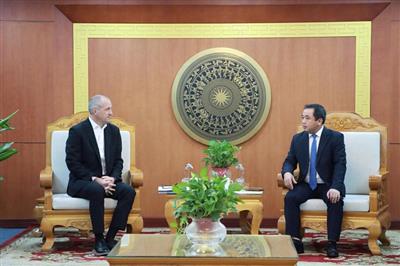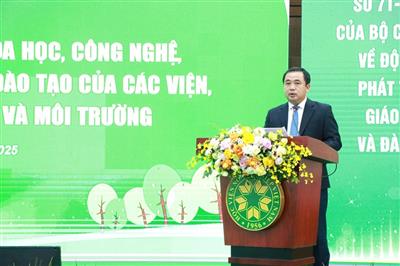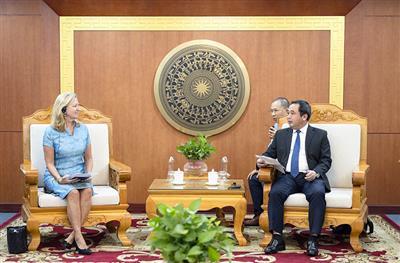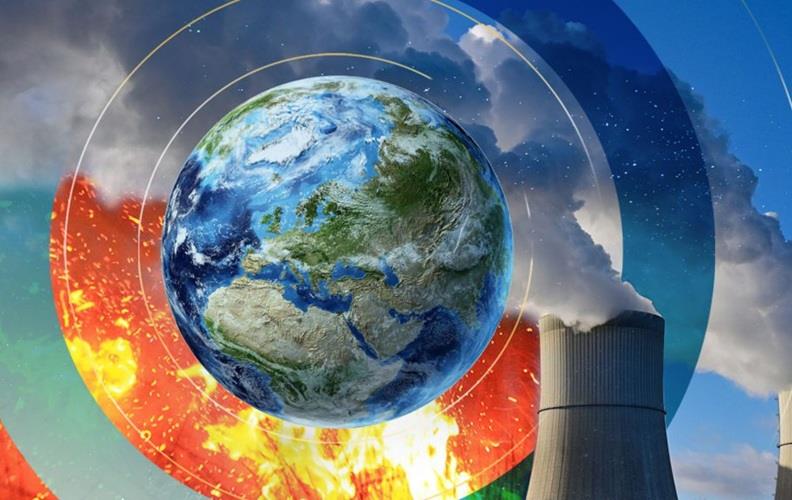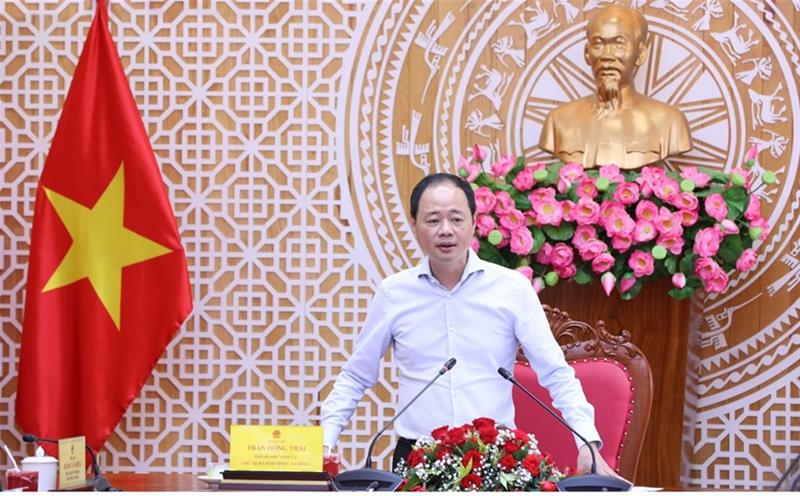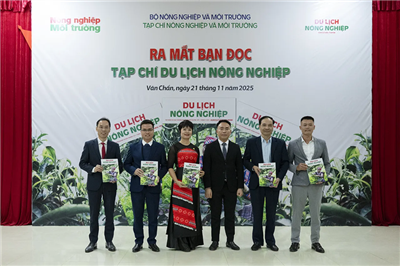
Fuel-less flywheel power generation technology: A new pathway for Vietnam’s energy self-reliance
27/10/2025TN&MTThroughout human history, energy has been the driving force behind progress and civilization. Yet in the 21st century, it has also become one of humanity’s greatest challenges, as the planet warms, the climate grows more erratic, and fossil fuels near exhaustion.
Motivated by that concern, my colleagues and I at the Institute for Disaster and Environmental Studies (RIDES) have dedicated years of research to finding a new direction, a form of electricity generation that requires no fuel, produces no emissions, and operates independently of natural resources while remaining sustainable and stable. This paper introduces what we call “Flywheel electrogen technology” — a bold experimental step by Vietnamese scientists toward energy self-sufficiency and a green future.
A planet hungry for energy and hope
The 21st century has witnessed an unprecedented surge in global energy demand. Electricity powers our cities, factories, and digital networks, but the Earth pays a steep price. According to the International Energy Agency (IEA, 2024), nearly 80% of global electricity still comes from fossil fuels: coal, oil, and gas. Every kilowatt-hour of coal-fired power emits about 820 g CO₂, pushing the planet further into climate crisis.
Humanity has explored alternatives: solar, wind, tidal, biomass, and battery storage: yet all remain limited. Solar energy fades at night, weak winds slow turbines, and large-scale batteries are costly and generate indirect emissions during production. This persistent dilemma raises a century-old question: Can humankind generate electricity without fuel or external natural inputs?
That question, one that fascinated pioneers like Tesla, inspired me, as a Vietnamese scientist, to embark on more than a decade of research in pursuit of an answer grounded in science and human ingenuity.

Illustrative model of the fuel-less flywheel power generation system
The journey of an idea: “Electricity without fuel”
The flywheel electrogen technology developed at RIDES is based on a deceptively simple physical concept: “When rotational motion reaches a perfect resonance between mechanics and electromagnetism, energy can be continuously maintained and regenerated.”
This principle differentiates our system from traditional flywheel energy storage, which merely stores and releases existing energy. The flywheel electrogen model continuously generates new electrical energy through nonlinear electromagnetic resonance and the rotational inertia of the system.
We call it a “self-sustaining electrogen system”, a generator that produces and sustains its own power without dependence on fuel, wind, or sunlight. Once a theoretical concept, it has now been validated through physical prototypes and empirical data.
Operating principle: resonance, balance, self-sustainment
The system is founded on three interrelated physical principles:
- Energy conservation and inertial resonance: a 30–40 kg alloy flywheel rotates at 3,000–3,600 rpm, storing kinetic energy. Using magnetic or ceramic bearings with ultra-low friction, mechanical losses are minimized, enabling long-term motion stability.
- Variable electromagnetic induction: as the flywheel spins, a Permanent Magnet Synchronous Generator (PMSG) creates a fluctuating magnetic field, inducing continuous electric current in the stator coils — similar to a turbine, but without a combustion engine.
- Smart energy feedback: a portion of generated electricity is fed back to the Smart Energy Controller, which employs PLC/MCU processors to adjust phase, frequency, and electromagnetic torque, maintaining resonance stability. The system thus achieves an Energy Equilibrium State, where output energy (Pₒᵤₜ) approximates the sum of feedback energy (P_feedback) and load energy (P_load), allowing continuous operation without external fuel.
System structure: The complete unit consists of seven coaxial components: (1) High-speed alloy flywheel (30–40 kg), provides rotational inertia; (2) BLDC starter motor (2–5 kW) – operates for 3–5 minutes during startup; (3) Permanent Magnet Synchronous Generator (PMSG) – using high-flux NdFeB magnets and pure copper windings to reduce losses; (4) Central controller – monitors current, voltage, and phase; manages energy feedback; (5) 48 V DC battery – used only for initial startup, then recharged by the system; (6) Inverter–stabilizer – converts DC to 220 V or 380 V AC, 50 Hz; (7) Electrical load – for residential, industrial, or defense/agricultural use.
The unit is mounted on an anti-vibration frame with temperature and overvoltage protection, ensuring continuous, safe, and stable operation.
Experimental validation: when theory meets reality
Experiments were conducted at the RIDES Green Energy Laboratory from March to August 2025 on a 5 kW prototype. The results exceeded expectations:
|
Parameter |
Value |
|
Nominal rotational speed |
3,600 rpm |
|
Flywheel mass |
38 kg |
|
Peak magnetic flux density |
0.8 T |
|
Nominal output voltage |
220 V AC |
|
Rated load current |
22 A |
|
Overall efficiency |
92.3 % |
|
Continuous operating time |
> 500 hours |
|
Stator core temperature |
48–52 °C |
After startup using a 48 V battery, the system sustained continuous power generation for over 500 hours, with voltage fluctuations under ±3 % — an exceptional level of stability for standalone systems.
The prototype confirmed that output energy exceeded mechanical input losses, thanks to perfect electromagnetic resonance.
When power losses (P_loss → 0), the relation P_out ≈ P_feedback + P_load holds — establishing a self-balanced energy state.
Comparative performance and implications
|
System |
Efficiency (%) |
CO₂ emissions |
Fuel use |
Continuity |
Maintenance |
|
Coal-fired power |
38–45 |
Very high |
Yes |
Limited |
High |
|
Wind power |
25-40 |
0 |
No |
Intermittent |
Medium |
|
Solar power |
18-30 |
0 |
No |
Intermittent |
Low |
|
Flywheel storage (conventional) |
70-85 |
0 |
No |
Limited |
Medium |
|
Flywheel Electrogen (Prof. Dr. Dương Văn Sinh) |
92-94 |
0 |
No |
24/7 continuous |
Very low |
Thus, the Vietnamese-developed flywheel system achieves 20–60 % higher efficiency than common renewable technologies, with zero emissions.
Economic viability and application potential
The 5 kW prototype cost approximately 95 million VND to build, with a payback period under 18 months and an operational lifespan of over 10 years.
A 10 kW module can power five households or a small workshop, and multiple modules can be linked to form a distributed microgrid.
Potential applications include:
- Rural electrification: Supplying reliable power to remote or island areas without national grid access.
- Circular agriculture: Integrating with hydroponic systems, biomass energy, and microbial treatment.
- Defense operations: Powering radar, communication, or research stations.
- Smart cities: Maintaining continuous electricity for cameras, traffic lights, and mini data centers.
Beyond its scientific value, the technology carries strategic significance for Vietnam’s energy security and green economic transition.
Looking ahead: toward a self-sustaining and humane energy future
The fuel-less flywheel power generation technology has been officially registered under Copyright No. 6552/2025/QTG, marking a milestone in Vietnam’s energy research.
Yet more than a patent, it represents a vision: a future where energy is no longer a burden but a sustainable, equitable source of life for all.
We propose establishing a National Program on Fuel-less Energy of Vietnam, led by the Ministry of Science and Technology, to:
- Build pilot plants for industrial-scale flywheel systems (10–100 kW) forming the basis for decentralized generation;
- Expand international cooperation and secure global intellectual property rights;
- Integrate the technology with waste processing, biomass, and battery recycling to form a closed-loop circular energy chain.
I firmly believe that when Vietnamese intellect is given trust, our science can generate value beyond the boundaries of the old world. “There are no limits to creativity — only the limits of belief.”
Prof. Dr. Duong Van Sinh
Institute for Disaster and Environmental Studies (RIDES)



